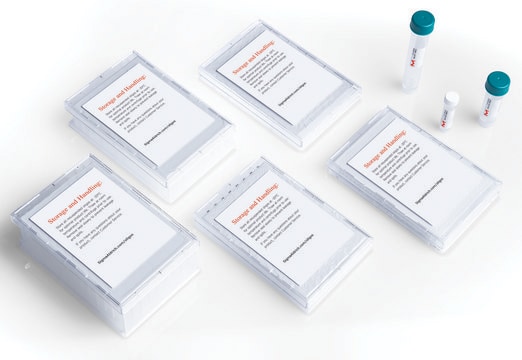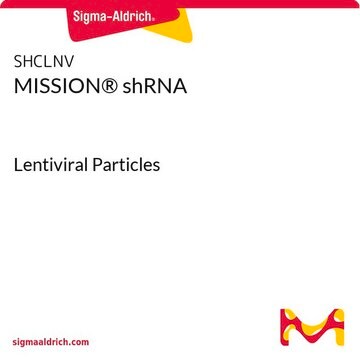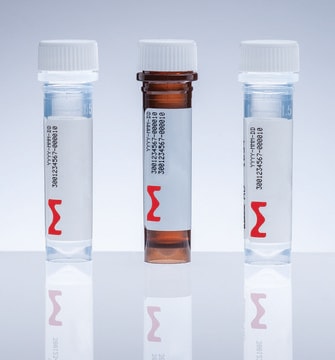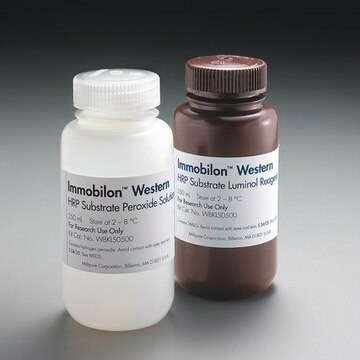추천 제품
생물학적 소스
rabbit
Quality Level
결합
unconjugated
항체 형태
affinity isolated antibody
항체 생산 유형
primary antibodies
클론
polyclonal
제품 라인
Prestige Antibodies® Powered by Atlas Antibodies
양식
buffered aqueous glycerol solution
종 반응성
human, mouse, rat
향상된 검증
orthogonal RNAseq
RNAi knockdown
Learn more about Antibody Enhanced Validation
기술
immunoblotting: 0.04-0.4 μg/mL
immunohistochemistry: 1:200-1:500
면역원 서열
ILNANYMAKRLETHYRILFRGARGYVGHEFILDTRPFKKSANIEAVDVAKRLQDYGFHAPTMSWPVAGTLMVEPTESEDKAELDRFCDAMISIRQEIADIEEGRIDPRVNPLKMSPHSLTCVTSSHWDRPYSREVAAFPLPFVKPENK
UniProt 수납 번호
배송 상태
wet ice
저장 온도
−20°C
타겟 번역 후 변형
unmodified
유전자 정보
human ... GLDC(2731)
일반 설명
GLDC (glycine decarboxylase) is a pyridoxal phosphate (PLP) containing α-amino acid decarboxylase that encodes a P-protein.
면역원
Glycine dehydrogenase recombinant protein epitope signature tag (PrEST)
애플리케이션
All Prestige Antibodies Powered by Atlas Antibodies are developed and validated by the Human Protein Atlas (HPA) project and as a result, are supported by the most extensive characterization in the industry.
The Human Protein Atlas project can be subdivided into three efforts: Human Tissue Atlas, Cancer Atlas, and Human Cell Atlas. The antibodies that have been generated in support of the Tissue and Cancer Atlas projects have been tested by immunohistochemistry against hundreds of normal and disease tissues and through the recent efforts of the Human Cell Atlas project, many have been characterized by immunofluorescence to map the human proteome not only at the tissue level but now at the subcellular level. These images and the collection of this vast data set can be viewed on the Human Protein Atlas (HPA) site by clicking on the Image Gallery link. We also provide Prestige Antibodies® protocols and other useful information.
The Human Protein Atlas project can be subdivided into three efforts: Human Tissue Atlas, Cancer Atlas, and Human Cell Atlas. The antibodies that have been generated in support of the Tissue and Cancer Atlas projects have been tested by immunohistochemistry against hundreds of normal and disease tissues and through the recent efforts of the Human Cell Atlas project, many have been characterized by immunofluorescence to map the human proteome not only at the tissue level but now at the subcellular level. These images and the collection of this vast data set can be viewed on the Human Protein Atlas (HPA) site by clicking on the Image Gallery link. We also provide Prestige Antibodies® protocols and other useful information.
생화학적/생리학적 작용
GLDC (glycine decarboxylase) has inducing effect on glycolysis and glycine/serine metabolism. This effect alters pyrimidine metabolism in regulation of cancer cell proliferation. Mutation in GLDC causes non-ketotic hyperglycinemia, also called as glycine encephalopathy. It catalyzes the glycine decarboxylation reaction by removing CO2 from the glycine substrate without releasing the expected amine group i.e. methylamine. Instead of producing methylamine as end product, the reaction ends with the generation of an aminomethyl moiety. This unusual decarboxylation mechanism produces H-protein-S-aminomethyl dihydrolipoyllysine.
특징 및 장점
Prestige Antibodies® are highly characterized and extensively validated antibodies with the added benefit of all available characterization data for each target being accessible via the Human Protein Atlas portal linked just below the product name at the top of this page. The uniqueness and low cross-reactivity of the Prestige Antibodies® to other proteins are due to a thorough selection of antigen regions, affinity purification, and stringent selection. Prestige antigen controls are available for every corresponding Prestige Antibody and can be found in the linkage section.
Every Prestige Antibody is tested in the following ways:
Every Prestige Antibody is tested in the following ways:
- IHC tissue array of 44 normal human tissues and 20 of the most common cancer type tissues.
- Protein array of 364 human recombinant protein fragments.
결합
Corresponding Antigen APREST86183
물리적 형태
Solution in phosphate-buffered saline, pH 7.2, containing 40% glycerol and 0.02% sodium azide
법적 정보
Prestige Antibodies is a registered trademark of Merck KGaA, Darmstadt, Germany
면책조항
Unless otherwise stated in our catalog or other company documentation accompanying the product(s), our products are intended for research use only and are not to be used for any other purpose, which includes but is not limited to, unauthorized commercial uses, in vitro diagnostic uses, ex vivo or in vivo therapeutic uses or any type of consumption or application to humans or animals.
적합한 제품을 찾을 수 없으신가요?
당사의 제품 선택기 도구.을(를) 시도해 보세요.
Storage Class Code
10 - Combustible liquids
WGK
WGK 1
Flash Point (°F)
Not applicable
Flash Point (°C)
Not applicable
가장 최신 버전 중 하나를 선택하세요:
Jennifer M Love et al.
Journal of child neurology, 29(1), 122-127 (2013-01-26)
Nonketotic hyperglycinemia is an inborn error of glycine metabolism. It manifests mostly as an acute encephalopathy in the neonatal period, although later, atypical presentations have also been reported. Mutations in 3 different genes have been implicated in nonketotic hyperglycinemia. Here
Maybelle Kho Go et al.
Biochemistry, 53(5), 947-956 (2014-01-29)
Glycine decarboxylase (GLDC) is a metabolic oncogene that links glycine metabolism with tumorigenesis. In humans, GLDC is part of a multienzyme complex (which includes the lipoyl-containing H-protein) that couples the decarboxylation of glycine to the biosynthesis of serine. Details of
Wen Cai Zhang et al.
Cell, 148(1-2), 259-272 (2012-01-10)
Identification of the factors critical to the tumor-initiating cell (TIC) state may open new avenues in cancer therapy. Here we show that the metabolic enzyme glycine decarboxylase (GLDC) is critical for TICs in non-small cell lung cancer (NSCLC). TICs from
Junko Kanno et al.
Journal of medical genetics, 44(3), e69-e69 (2007-03-16)
Non-ketotic hyperglycinaemia (NKH) is an inborn error of metabolism characterised by accumulation of glycine in body fluids and various neurological symptoms. NKH is caused by deficiency of the glycine cleavage multienzyme system with three specific components encoded by GLDC, AMT
Christiaan F Labuschagne et al.
Cell reports, 7(4), 1248-1258 (2014-05-13)
Previous work has shown that some cancer cells are highly dependent on serine/glycine uptake for proliferation. Although serine and glycine can be interconverted and either might be used for nucleotide synthesis and one-carbon metabolism, we show that exogenous glycine cannot
자사의 과학자팀은 생명 과학, 재료 과학, 화학 합성, 크로마토그래피, 분석 및 기타 많은 영역을 포함한 모든 과학 분야에 경험이 있습니다..
고객지원팀으로 연락바랍니다.









